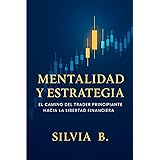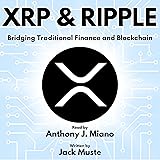Are you pondering the transformative shifts occurring at the intersection of traditional finance and the burgeoning cryptocurrency market? As highlighted in the video above, recent market movements indicate a significant rally for major cryptocurrencies, while industry leaders discuss the profound implications of tokenization and the rise of digital asset treasuries. This evolving landscape presents both immense opportunities and complex challenges for investors and businesses alike.
The Ascent of Digital Assets and the Vision of Tokenization
The cryptocurrency market has recently demonstrated robust activity, with Bitcoin impressively climbing above the $120,000 level for the first time since August, showcasing its continued resilience and investor confidence. Ethereum (Ether) also experienced a notable rise of 2.5%, reaching $4440, while XRP ticked higher. These upward trends, occurring amidst a tech-heavy Nasdaq rise and ongoing governmental discussions, underscore a growing appetite for digital assets within the broader financial ecosystem.
One of the most captivating discussions surrounding this evolution revolves around tokenization. Vlad Tenev, CEO of Robinhood, recently articulated his belief that tokenized stocks possess the potential to fundamentally redefine and even overshadow traditional financial markets. Speaking at Token 2049 in Singapore, Tenev suggested that tokenization is poised to become the default method for foreign investors seeking exposure to US markets. This perspective highlights a future where traditional assets, from stocks to real estate, could be represented and traded on blockchain networks, offering unprecedented liquidity and accessibility.
Imagine if every share of a company, every piece of property, or even every barrel of oil could be represented as a digital token on a blockchain. This system would streamline transactions, reduce intermediaries, and potentially lower costs, ultimately making financial markets more efficient and inclusive. Robinhood, a key player in retail investment, has already taken steps in this direction, launching 200 tokenized US stocks for its EU customers. This strategic move not only diversified its offerings but also saw the firm’s stock pop by approximately 13%, indicating a positive market reception to the practical application of tokenization.
Understanding Digital Asset Treasuries and Their Market Impact
Beyond individual asset performance and the broader concept of tokenization, a significant trend emerging is the proliferation of digital asset treasuries. These specialized companies are designed to hold and manage substantial reserves of cryptocurrencies, often focusing on specific tokens. For instance, the video introduces Bart Smith, CEO of the Avalanche Treasury company, which has announced a monumental $1 billion Treasury holding the AVAX token.
1. **Defining Digital Asset Treasuries:** At its core, a digital asset treasury is a corporate entity or fund whose primary objective is to acquire, hold, and manage a portfolio of cryptocurrencies. Unlike a typical investment fund, many of these treasuries seek to provide a regulated and publicly tradable vehicle for investors to gain exposure to the underlying digital asset or its associated ecosystem. This approach aims to bridge the gap between traditional capital markets and the often-volatile crypto space, offering a more structured investment avenue.
2. **The Avalanche Treasury Company’s Strategy:** Bart Smith emphasizes that the Avalanche Treasury is not simply about holding AVAX; it’s about participating in the holistic growth of the Avalanche ecosystem. This includes investing in validators to run nodes, and even making direct investments into protocols and Layer 1 (L1) solutions being built on Avalanche. This multi-faceted approach aims to generate value for shareholders beyond mere token appreciation, drawing inspiration from Michael Saylor’s pioneering Bitcoin strategy but expanding it to encompass a broader array of value creation activities.
Why Avalanche is Poised for Enterprise Adoption
Bart Smith highlights a crucial distinction for Avalanche: its unique software component. While many blockchains benefit from network effects, Avalanche offers the distinct ability for users to build their own L1s “out of the box.” This functionality allows enterprises to view Avalanche as a robust, customizable software platform, enabling them to integrate blockchain technology into their businesses more efficiently and competitively. This positions Avalanche strongly in the business vertical, offering a different opportunity set compared to networks like Solana or Bitcoin.
Imagine a large enterprise wanting to deploy a private, custom blockchain for supply chain management or internal record-keeping. Avalanche’s architecture allows them to spin up a specialized L1 tailored precisely to their needs, benefiting from the underlying security and decentralization of the main Avalanche network without being constrained by its general-purpose design. This makes Avalanche particularly appealing for sophisticated institutional and business applications.
Navigating the “Noise” and Regulatory Landscape
The rapid growth of digital asset treasuries has inevitably created what Bart Smith refers to as “a lot of noise in the space.” This includes various “flavors” of treasuries, some of which involve existing, less successful businesses pivoting or being acquired to serve as shells for new crypto ventures. This can lead to confusion for investors, who might be investing in a “zombie business” rather than a dedicated digital asset strategy.
1. **Distinguishing Quality from Confusion:** The Avalanche Treasury has opted for a different route, establishing a solely dedicated business from scratch. This approach, while more time-consuming and challenging in terms of fundraising, aims to provide a clearer platform for investors. It ensures that the market understands the company’s primary focus and investment objectives, minimizing confusion and building long-term trust.
2. **Regulatory Scrutiny and Market Integrity:** The Wall Street Journal’s report on financial regulators examining unusual trading patterns in shares of over 200 companies adopting a crypto treasury strategy underscores the importance of regulatory clarity and ethical practices. Concerns over high trading volumes and potential “bad actors” are legitimate. Bart Smith acknowledges these concerns and highlights that the Avalanche Treasury, through its SPAC (Special Purpose Acquisition Company) route, aims to avoid legacy business concerns and adhere strictly to SEC rules. This commitment to transparency and compliance is crucial for the long-term credibility and success of the digital asset industry.
The Role of Regulated Public Vehicles
The formation of structures like the Avalanche Treasury company, combining with Mountain Lake Acquisition Corporation in a deal valued at over $671 million (including approximately $453 million in Treasury assets), signifies a maturing market. The expectation for the combined company to list on the NASDAQ in Q1 of next year, subject to regulatory and shareholder approval, is a powerful indicator.
Historically, emerging industries have benefited from the ability to create public companies, issue debt and equity, and raise capital through established financial channels. The cryptocurrency industry, for a long time, lacked these traditional mechanisms, making institutional investment more challenging. These new digital asset treasuries, particularly those structured through SPACs and adhering to rigorous regulatory standards, are changing that narrative. They are allowing traditional capital markets to invest in digital assets in a regulated and scalable manner, fostering growth and mainstream adoption.







